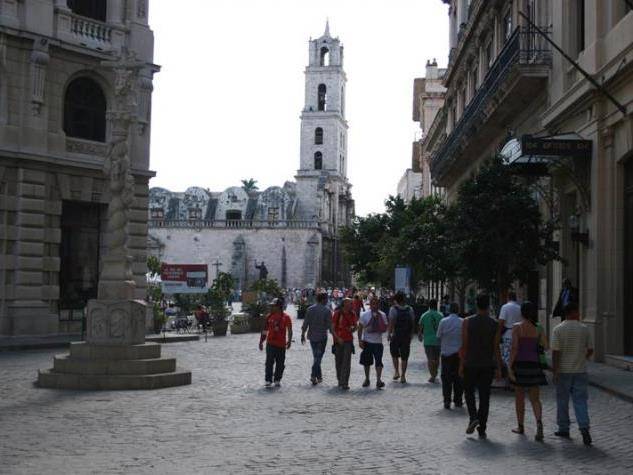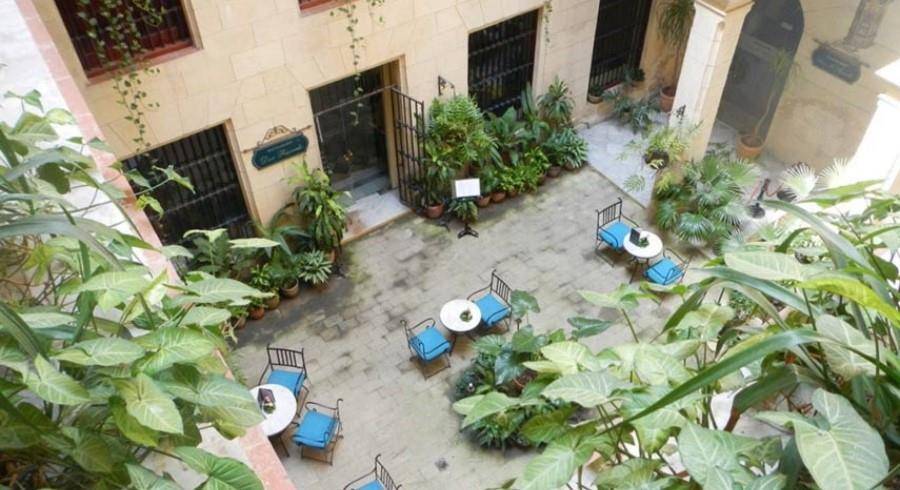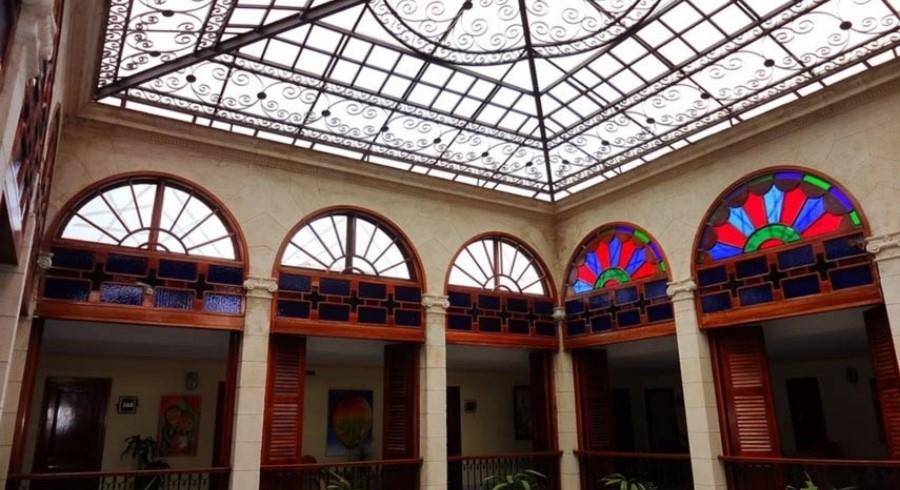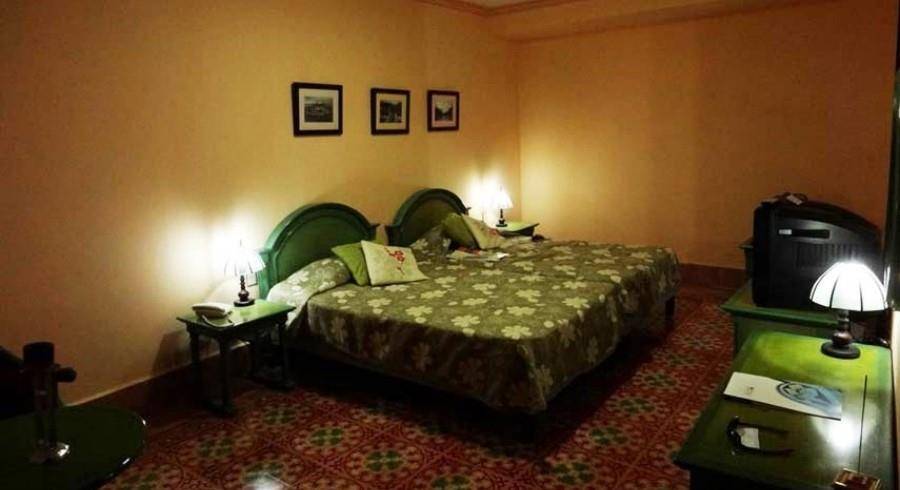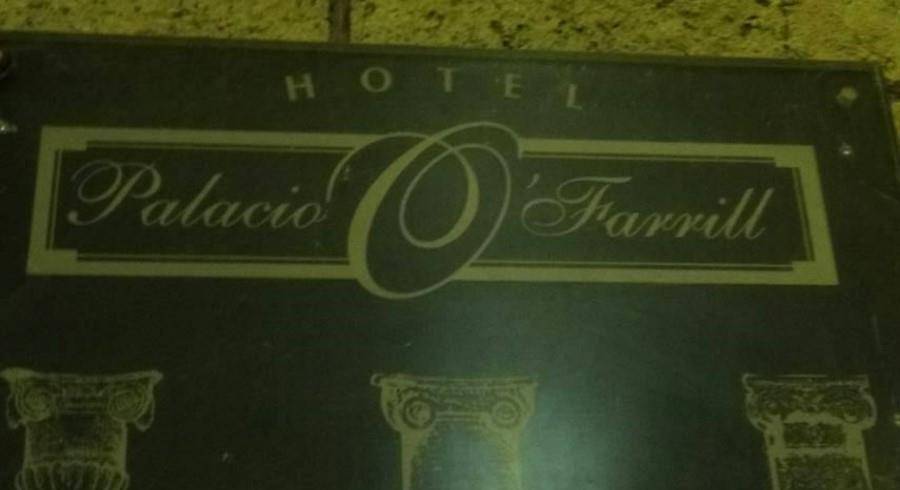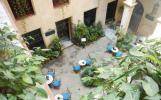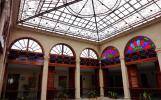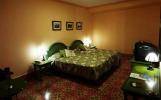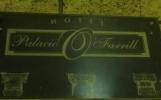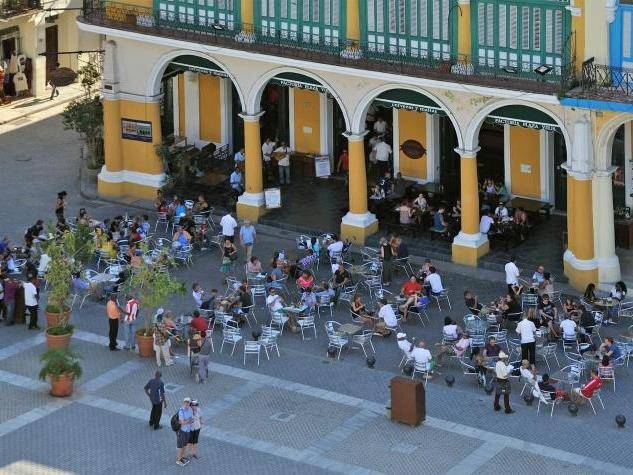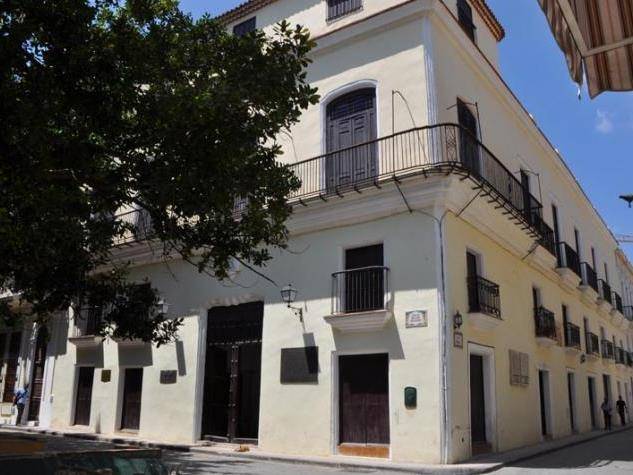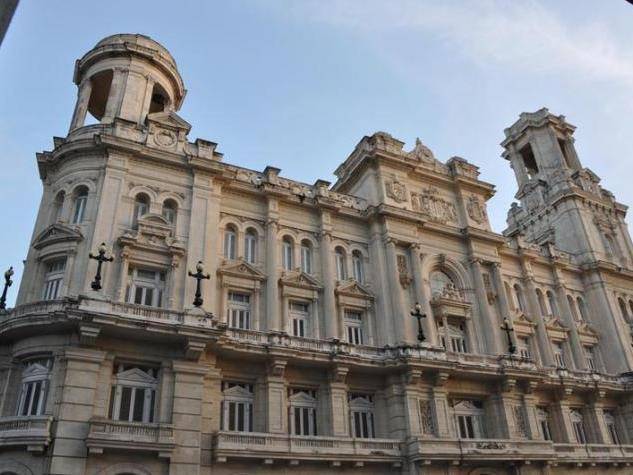About
Palacio O'Farrill
The Hotel Palacio O’Farrill is a terrifically grand neoclassical mansion standing on the corner of Cuba & Chacon Streets near the port of Havana. Its owner, Don Ricardo O’Farrill y O’Daly, made his fortune in the slave trade, & owned several large sugar mills. The entrance hall of his house is almost ludicrously impressive, with a toweringly high ceiling, & vast iron-studded polished mahogany doors. Also not to be missed, are two small but elegant black marble seats in the hallway or the idiosyncratically double-scrolled archway leading into the courtyard.
The general aesthetic of the O’Farrill is Cuban colonial; Hibernian it is not, but as if to rectify the situation the colour green has been applied with a liberal hand throughout the establishment. On occasion enthusiasm for the Emerald Isle seems to run amuck, such as in the stinging viridian in the stained glass fanlights & the startling lime-green walls of the sitting rooms in the suites.
The faces of visitors drinking pre-lunch cocktails in the courtyard also acquire an interesting hue from the greenish tinge of the canopy which shades them from the sun. However the restaurant and snack bar break with the chromatic norm, & the latter, decorated in mahogany with terracotta furnishings, proves welcomingly cool relief after a morning of sightseeing in what can sometimes feel like the blast furnace, albeit the very picturesque one, of Old Havana.
A particularly attractive feature of the Palacio O'Farrill building is the way in which the mahogany detailing has been left unpainted, being simply varnished to show the beauty of the wood. Throughout the building there are pieces of good old Cuban furniture as well as numerous reproductions, but the latter are so well made in exact imitation of traditional pieces that the overall impression is one of pleasing visual harmony.
